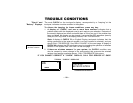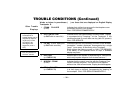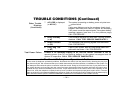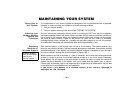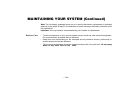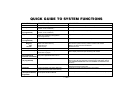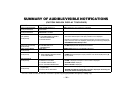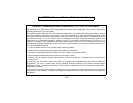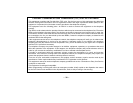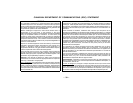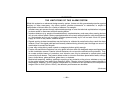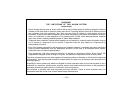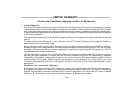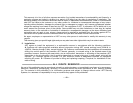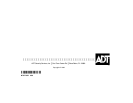
Ð 40 Ð
WARNING!
THE LIMITATIONS OF THIS ALARM SYSTEM
While this system is an advanced design security system, it does not offer guaranteed protection against
burglary or other emergency. Any alarm system, whether commercial or residential, is subject to
compromise or failure to warn for a variety of reasons. For example:
¥ Intruders may gain access through unprotected openings or have the technical sophistication to bypass
an alarm sensor or disconnect an alarm warning device.
¥ Intrusion detectors (e.g. passive infrared detectors), smoke detectors, and many other sensing devices
will not work without power. Battery operated devices will not work without batteries, with dead batteries,
or if the batteries are not put in properly. Devices powered solely by AC will not work if their AC power
supply is cut off for any reason, however briefly.
¥ Signals sent by wireless transmitters may be blocked or reflected by metal before they reach the alarm
receiver. Even if the signal path has been recently checked during a weekly test, blockage can occur if a
metal object is moved into the path.
¥ A user may not be able to reach a panic or emergency button quickly enough.
¥ Passive Infrared Motion Detectors can only detect intrusion within the designed ranges as diagrammed
in their installation manual. Passive Infrared Detectors do not provide volumetric area protection. They
do create multiple beams of protection, and intrusion can only be detected in unobstructed areas
covered by those beams. They cannot detect motion or intrusion that takes place behind walls, ceilings,
floors, closed doors, glass partitions, glass doors, or windows.
Mechanical tampering, masking, painting or spraying of any material on the mirrors, windows or any part
of the optical system can reduce their detection ability. Passive Infrared Detectors sense changes in
temperature; however, as the ambient temperature of protected area approaches the temperature
range of 32° to 40°C (90° to 105°F), the detection performance can decrease.
(Continued)



